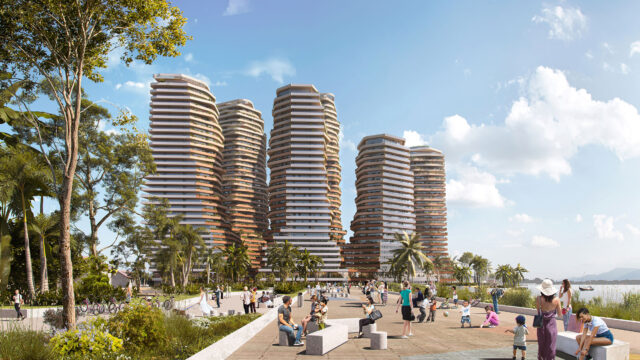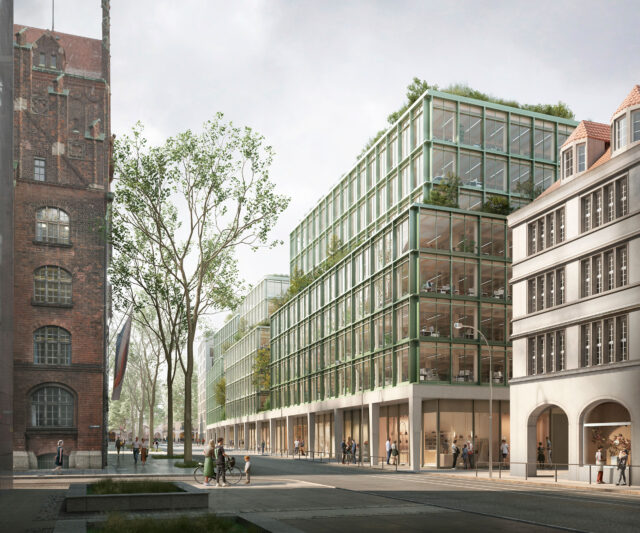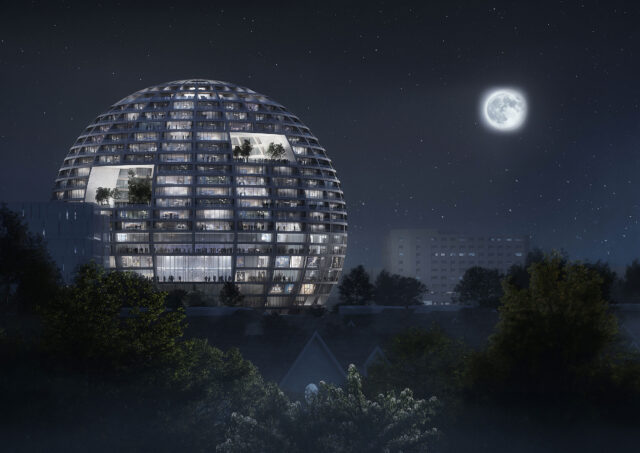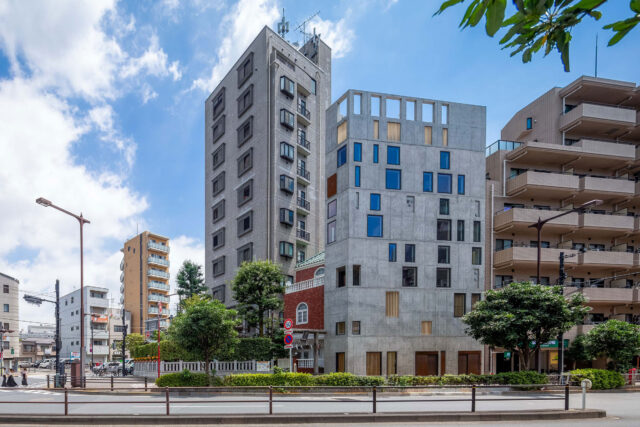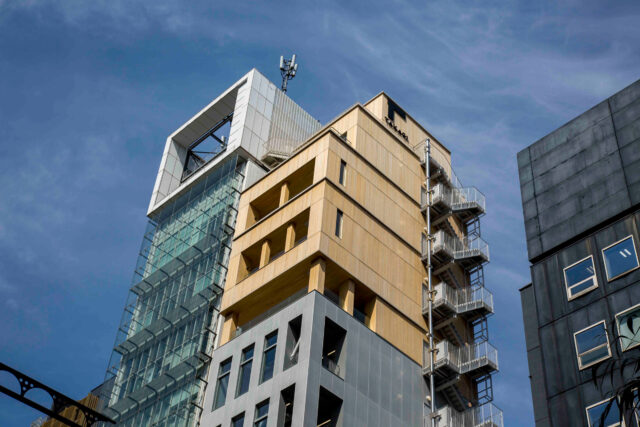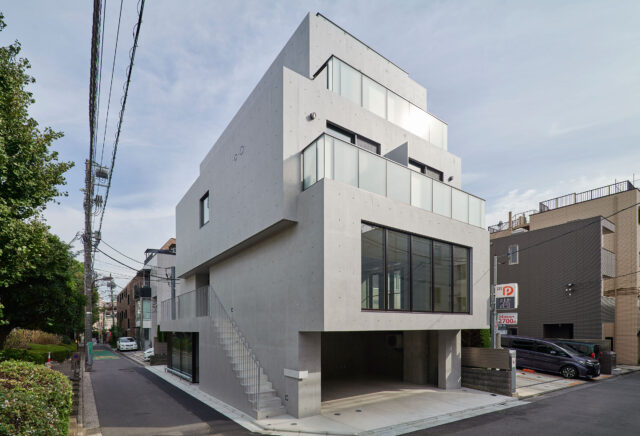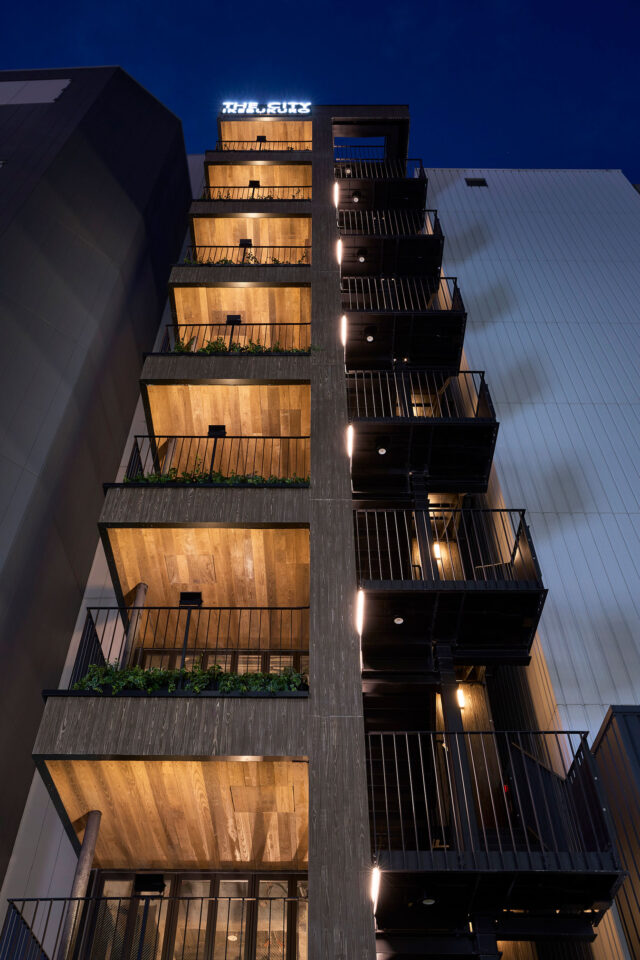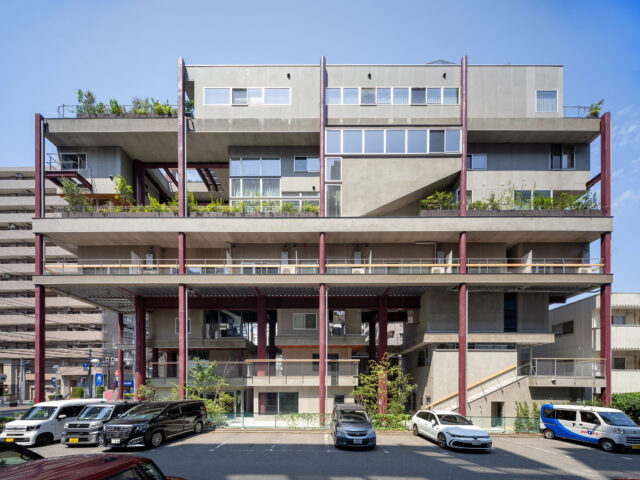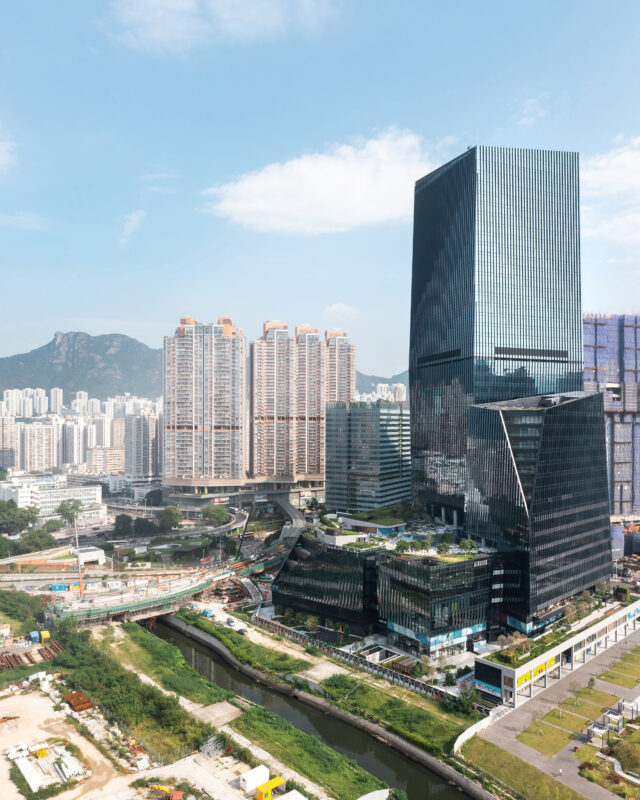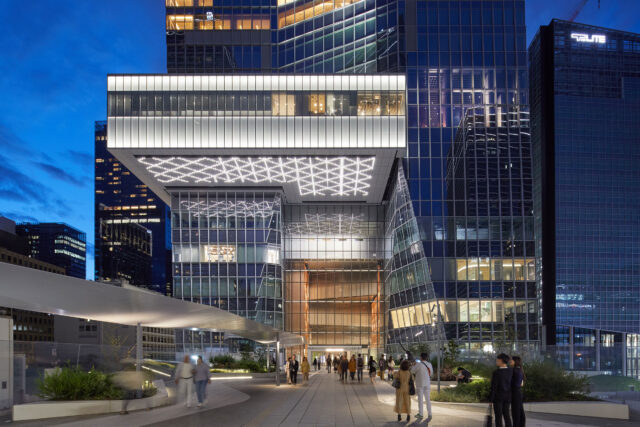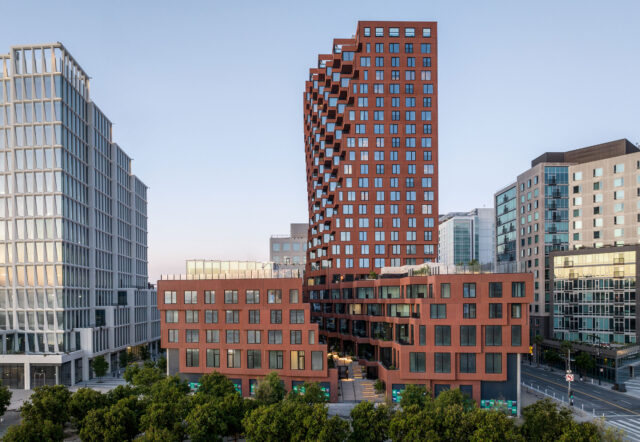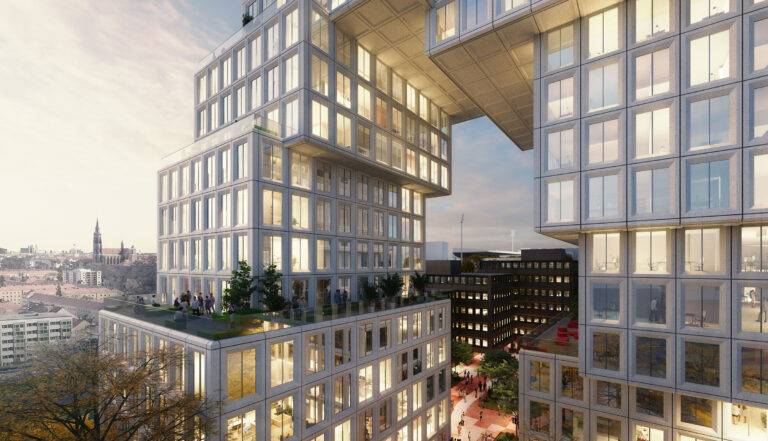
SHARE MVRDVによる、ドイツ・ミュンヘンの、既存ビル改修とタワー新築「Candid-Tor」。上部が結合する2つのタワーが地域のランドマークとなるべく構想、外観と量塊は既存建物を参照し関連を持たせ、塊がずれる事でタワー利用者が使用できる共有の屋上も生み出す



MVRDVが設計している、ドイツ・ミュンヘンの、既存ビル改修とタワー新築「Candid-Tor」。上部が結合する2つのタワーが地域のランドマークとなるべく構想、外観と量塊は既存建物を参照し関連を持たせ、塊がずれる事でタワー利用者が使用できる共有の屋上も生み出す計画です。
こちらは建築家によるテキストの翻訳
既存のビル群を改修し、上部で結合した2つのタワーを組み合わせた「Candid-Tor」は、ミュンヘン南部の困難な土地に大胆に介入しています。高さ64mのランドマークは、街のスケールに対して印象的な存在感を放つ一方、地上部では屋外空間の可能性を最大限に活かし、周辺環境とのつながりを持たせ、複合施設の中心に緑の広場を配置しています。
このプロジェクトはミュンヘンのキャンディッド広場に位置し、敷地の南側には6車線のキャンディッド通りがあり、北側の境界はミュンヘンの中央環状線の一部が盛り上がっているため、周辺道路から大きく切り離された空間になっています。敷地内の既存の複合ビルには、クリニックとオフィスが入居しています。新しい計画では、これらの機能に加え、レストラン、フィットネススタジオ、高齢者サービスセンター、児童デイケア、コミュニティ・文化センターなど、さまざまなプログラムが追加される予定です。
既存の建物はほぼそのままに改修され、9つのブロックのうち6つが新しいプランに組み込まれます。このアプローチにより、建設時に発生する二酸化炭素を大幅に削減し、サステナビリティに大きく寄与しています。
また、2つのタワーは、大小4つのブロックが互いに寄り添うように積み重ねられ、最上部のブロックは互いに接触して「門」を形成しています。また、イザール川の東側には、彫刻的なランドマークが連なっており、このプロジェクトは周辺地域のランドマークにもなっています。
新しいタワーのブロックは、そのサイズとファサードのデザインにおいて、敷地の既存の建造物をモデルにしており、以前の建物の「陰」に対して「陽」を提供しています。古い建物が暗い色で、地上レベルで水平に密集しているのに対し、タワーは明るく、ブロックは空に向かって垂直に積み重なっている。
このタワーのフォルムは、キャンディッド広場から敷地の中心に向かう人々を歓迎し、既存の複合施設の中庭を拡張・整備して緑豊かな憩いの場とするものです。また、環状道路の地下から敷地へのアクセスも改善され、より近隣に溶け込んだ敷地となりました。キャンディッド広場は、16世紀の画家ペーター・キャンディッドにちなんで名づけられたもので、屋外の表面や家具に強い色彩を取り入れ、近くの地下鉄駅の壁に描かれたアートワークと視覚的につながるように工夫されています。
緑は地上だけにとどまりません。タワーのブロックが移動するため、さまざまなレベルに共同テラスを設け、最終的にはタワーの利用者全員がアクセスできる共有の緑化された屋上を実現しています。
以下の写真はクリックで拡大します







以下、建築家によるテキストです。
Combining a renovation of an existing building complex with a pair of towers that are joined at the top, Candid-Tor represents a bold intervention on a challenging site in the south of Munich. While the 64-metre-tall landmark gives the design a striking presence on the scale of the city, at ground level the design maximises the potential of the outdoor space, making connections to its surroundings and placing a green plaza at the heart of the complex.
The project is located by Munich’s Candidplatz, in a space largely disconnected from the surroundings by roads: to the south of the site curves the six-lane Candidstraße, while the northern boundary is defined by a raised portion of Munich’s middle ringroad. An existing complex of buildings on the site houses a medical clinic and offices. In the new proposal these functions will be expanded and supplemented by a variety of other programmes including restaurants, a fitness studio, an elderly service centre, a child daycare, and a community and cultural centre.
The existing buildings will be largely retained and renovated – with six of the nine existing blocks being incorporated into the new plan. This approach contributes greatly to the sustainability of the proposal, significantly reducing the amount of embodied carbon generated by the construction of the scheme.
The standout element is the design’s two towers, each comprising four stacked blocks of varying sizes that lean towards each other – with the top-most blocks touching each other to create a “gate”. With this addition, the project becomes a landmark that helps to define the surrounding area and joins a series of other sculptural landmarks forming a chain on the east side of the river Isar.
In their size and the design of their façades, the blocks of the new towers are modelled on the site’s existing structures, providing the “yang” to the “yin” of what came before: where the older buildings are dark in colour and clustered horizontally at ground level, the towers are light, and their blocks stacked vertically towards the sky.
The form of the towers welcomes people approaching from Candidplatz into the heart of the site where the courtyard of the existing complex is expanded and improved, becoming a lush green recreation space. Access to the site from underneath the ringroad is also improved, making the site more integrated into its neighbourhood. The landscaping takes inspiration from the world of art – Candidplatz itself is named after the 16th-century painter Peter Candid – incorporating intense colours into the outdoor surfaces and furniture to create a visual link to the artwork on the walls of the nearby subway station.
The greenery is not only limited to ground level. Due to the shifting blocks of the towers, a number of communal terraces are created at various levels, culminating in a shared green rooftop that can be accessed by all users of the towers.

